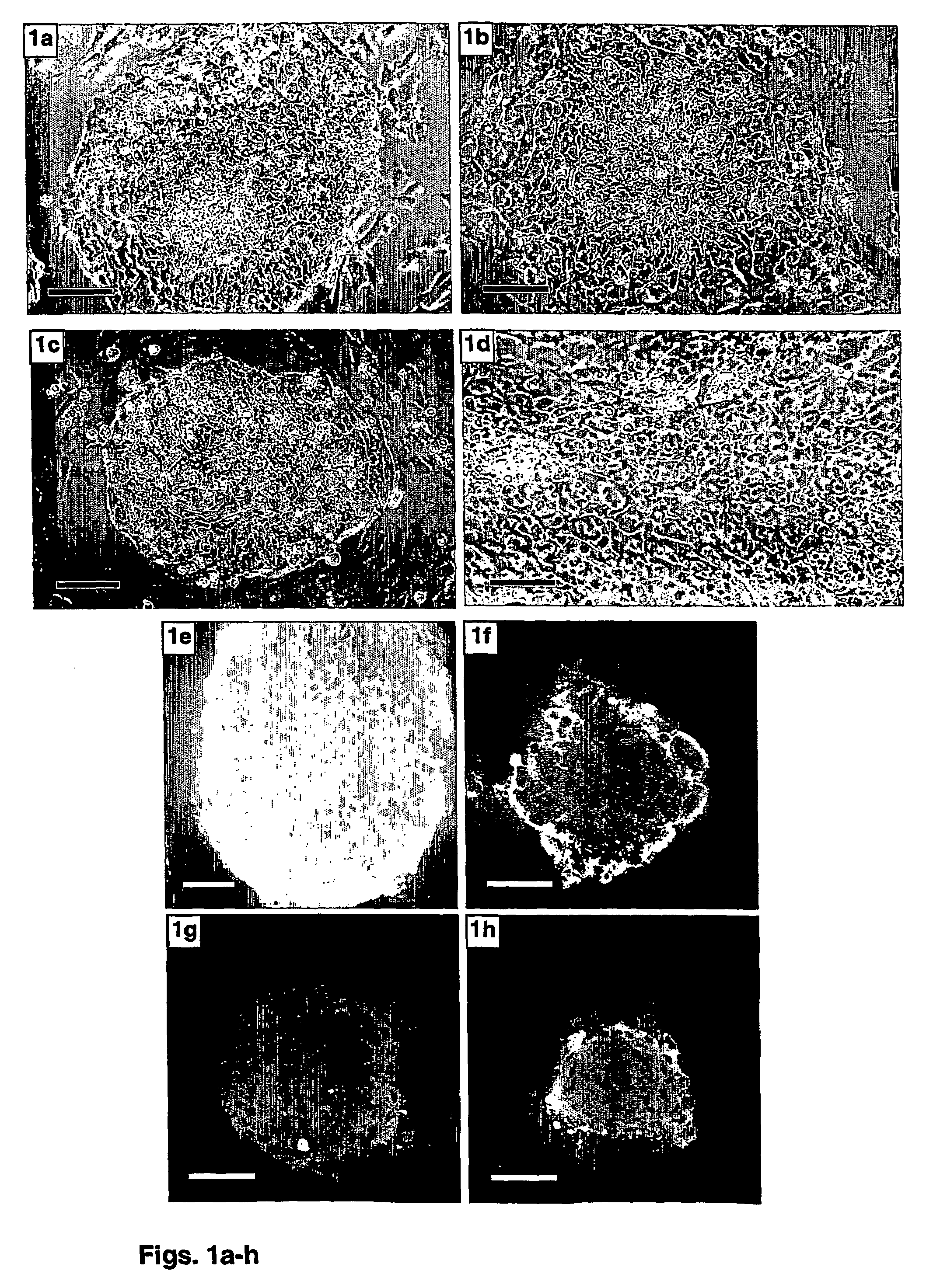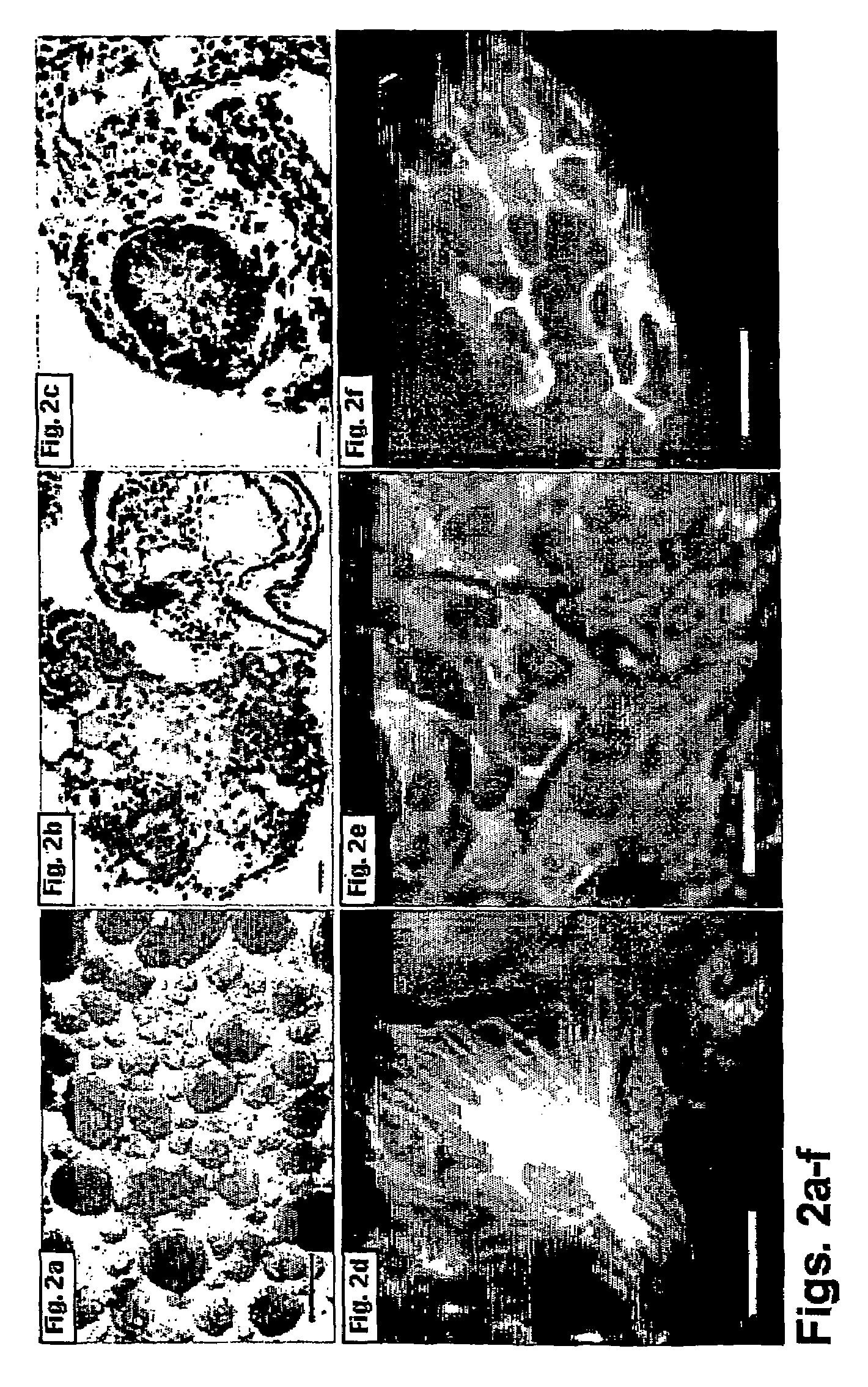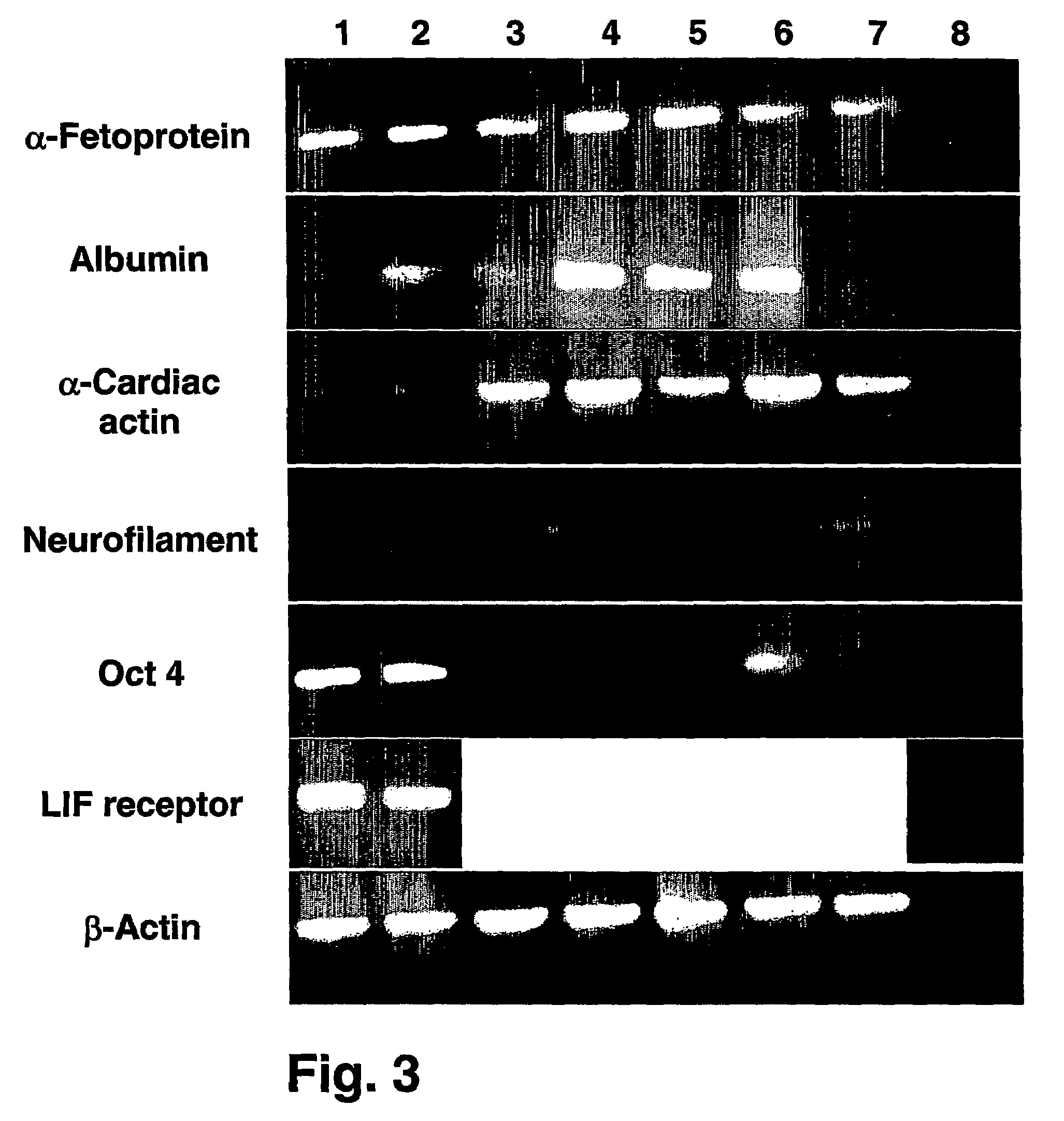Methods of preparing feeder cells-free, xeno-free human embryonic stem cells and cell cultures prepared using same
a technology cell cultures, which is applied in the field of methods of preparing can solve the problems of significant hurdles to the practical exploitation of human embryonic stem cells, affecting the production efficiency of embryonic stem cells, and preventing human differentiation,
- Summary
- Abstract
- Description
- Claims
- Application Information
AI Technical Summary
Benefits of technology
Problems solved by technology
Method used
Image
Examples
example 1
Feeder Cells-free Culture Systems Supplemented with Xeno-free Medium are Suitable for Growing ES Cell Lines
[0152]Human ES cells were transferred to fibronectin-based culture systems in the presence of serum replacement and selected growth factors to provide a feeder cells-free, well-defined environment for ES cells cultures.
[0153]Materials and Experimental Methods
[0154]ES cell cultures—Human ES cell lines I-6, I-3 [Amit, M. & Itskovitz-Eldor, J. Derivation and spontaneous differentiation of human embryonic stem cells. J Anat. 200, 225-232 (2002)] and H-9 [Thomson, J. A., et al., Embryonic stem cell lines derived from human blastocysts. Science 282, 1145-7 (1998)] were cultured with mouse embryonic fibroblasts (MEF) for 46, 39 and 25 passages, respectively, in a culture medium consisting of 85% Ko-DMEM, supplemented with 15% serum replacement (SR), 2 mM L-glutamine, 0.1 mM β-mercaptoethanol, 1% non-essential amino acid stock, and 4 ng / ml bFGF (all from Gibco Invitrogen corporation pr...
example 2
Feeder Cells-free Culture Systems Supplemented with Xeno-free Medium Support the Growth of Phenotypically Consistent ES Cells
[0162]The phenotypic characteristics of hES cells grown on feeder cells-free culture systems supplemented with xeno-free medium were evaluated using cell surface markers typical of undifferentiated cells.
[0163]Materials and Experimental Methods
[0164]Karyotype analysis—ES cells metaphases were blocked using colcemid (KaryoMax colcemid solution, Invitrogen, Grand island, N.Y., USA) and nuclear membranes were lysed in an hypotonic solution according to standard protocols (International System for Human Cytogenetic Nomenclature, ISCN). G-banding of chromosomes was performed according to manufacturer's instructions (Giemsa, Merck). Karyotypes of at least 20 cells per sample were analyzed and reported according to the ISCN.
[0165]Immunohistochemistry—Cells were fixed for 20 min in 4% paraformaldehyde, blocked for 15 min in 2% normal goat serum in PBS (Biological Indu...
example 3
Feeder Cells-free Culture Systems Supplemented with Xeno-free Medium Support the Growth of Functional ES Cells
[0170]Human ES cells grown on the fibronectin-based feeder cells-free culture systems supplemented with serum replacement and xeno-free growth factors were tested for their capacity to form embryoid bodies in vitro and teratomas in vivo.
[0171]Material and Experimental Methods
[0172]Formation of embryoid bodies (EBs) from human ES cells—Human ES cells grown on the feeder cells-free culture systems were removed from the 6-well plate (40-60 cm2) culture by Type IV Collagenase (1 mg / ml) and were further dissociated into small clamps using 1000 μl Gilson pipette tips. Thereafter, dissociated cells were cultured in 58 mm Petri dishes (Greiner, Germany) in a medium consisting of 80% Ko-DMEM, supplemented with 20% fetal bovine serum defined (FBSd, HyClone, Utah, USA), 1 mM L-glutamine, 0.1 mM β-mercaptoethanol, and 1% non-essential amino acid stock. Unless otherwise noted all were pu...
PUM
| Property | Measurement | Unit |
|---|---|---|
| doubling time | aaaaa | aaaaa |
| concentration | aaaaa | aaaaa |
| concentration | aaaaa | aaaaa |
Abstract
Description
Claims
Application Information
 Login to View More
Login to View More - R&D
- Intellectual Property
- Life Sciences
- Materials
- Tech Scout
- Unparalleled Data Quality
- Higher Quality Content
- 60% Fewer Hallucinations
Browse by: Latest US Patents, China's latest patents, Technical Efficacy Thesaurus, Application Domain, Technology Topic, Popular Technical Reports.
© 2025 PatSnap. All rights reserved.Legal|Privacy policy|Modern Slavery Act Transparency Statement|Sitemap|About US| Contact US: help@patsnap.com



